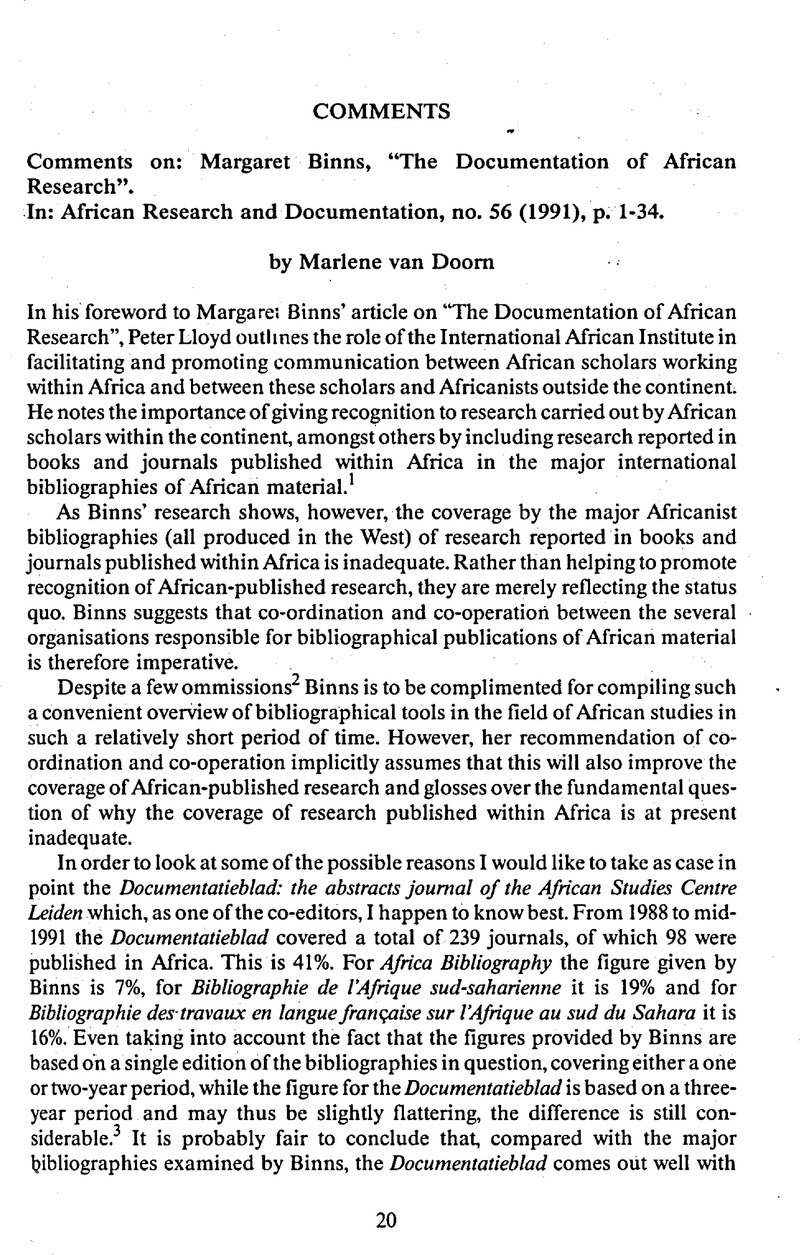No CrossRef data available.
Published online by Cambridge University Press: 25 April 2022

1 My comments deal only with the coverage of research reported in journals published in Africa. The whole question of grey literature, which would include completed research in the form of local reports or these submitted to African universities – coverage of which Binns found to be at best “very patchy” – is even more daunting, especially considering that grey literature is estimated to represent some 60% of publishing in Africa (Sturges, Paul and Neill, Richard,The Quiet Struggle: Libraries and Information for Africa, London, Mansell, 1990, p. 59).Google Scholar
2 I am thinking in particular ofAusgewählte neuere Literatur (Hamburg: Deutsches Übersee-Institut, Übersee-Dokumentation, Referat Afrika), as well as the almost complete lack of reference to databases (see, for example, the article by Seeley, Janet on “The use of bibliogrpahic databases in African Studies” in:African Research and Documentation, no. 41 (1986), p. 7-12).Google Scholar
3 A comparison of the number of journals covered by the Index of African Social Science Periodical Articles which are also included in the major bibliographies provides a similar result. Of the 24 journals indexed by the Index the Documentatieblad covers seven,Africa Bibliography five and Bibliographie de l’Afrique sudsaharienne three (Binns, p. 13).
4 The extent of duplication may actually be less than expected. In a comparison of five current bibliographies in the field of African studies, Marcel d'Hertefelt concludes that, at most, the extent of overlap barely exceeds one fifth of the journals covered by two bibliographies (“Bibliographies africanistes courantes: une comparison” in: Afrika Focus, vol. 7, nr. 1 (1991), p. 49-58).CrossRefGoogle Scholar